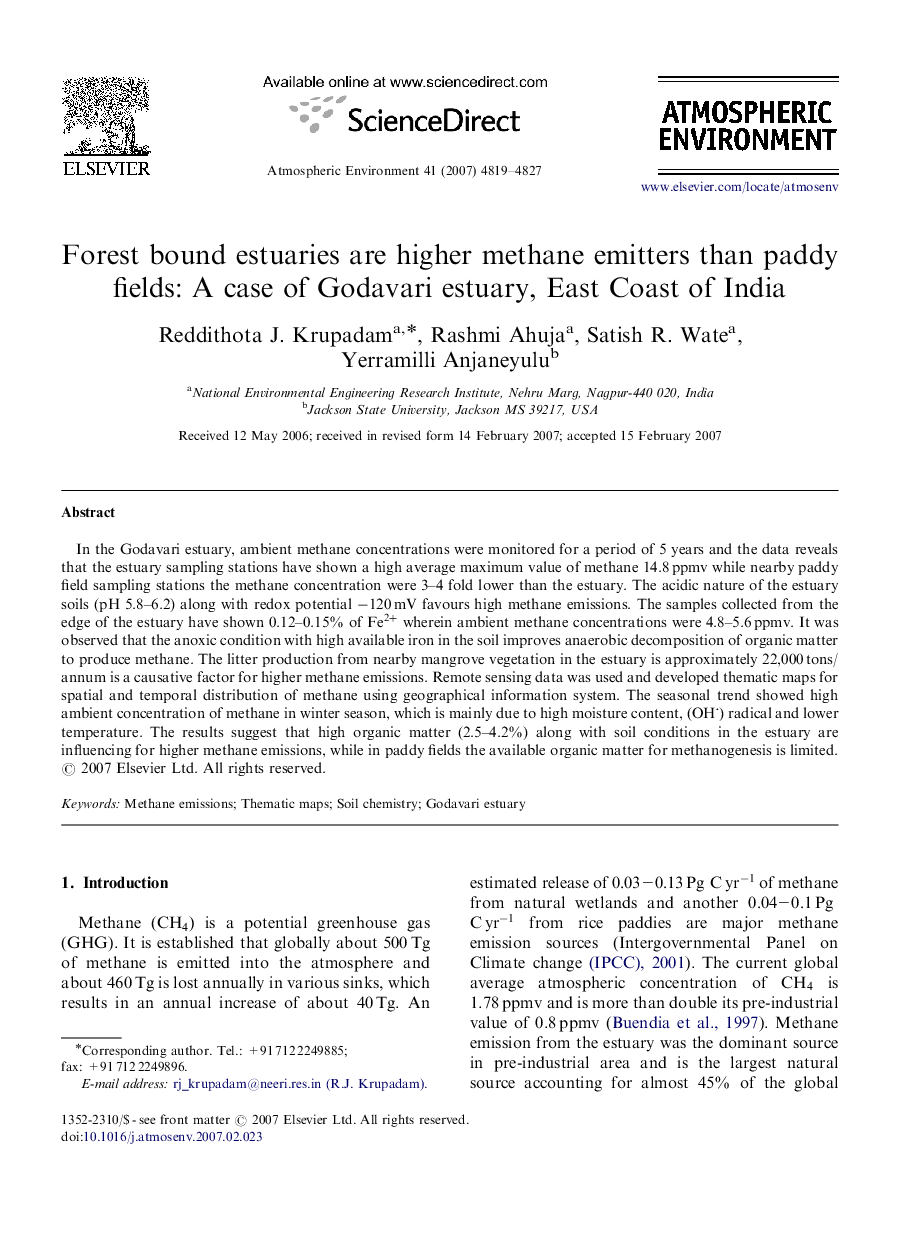| Article ID | Journal | Published Year | Pages | File Type |
|---|---|---|---|---|
| 4443571 | Atmospheric Environment | 2007 | 9 Pages |
In the Godavari estuary, ambient methane concentrations were monitored for a period of 5 years and the data reveals that the estuary sampling stations have shown a high average maximum value of methane 14.8 ppmv while nearby paddy field sampling stations the methane concentration were 3–4 fold lower than the estuary. The acidic nature of the estuary soils (pH 5.8–6.2) along with redox potential -120mV favours high methane emissions. The samples collected from the edge of the estuary have shown 0.12–0.15% of Fe2+Fe2+ wherein ambient methane concentrations were 4.8–5.6 ppmv. It was observed that the anoxic condition with high available iron in the soil improves anaerobic decomposition of organic matter to produce methane. The litter production from nearby mangrove vegetation in the estuary is approximately 22,000 tons/annum is a causative factor for higher methane emissions. Remote sensing data was used and developed thematic maps for spatial and temporal distribution of methane using geographical information system. The seasonal trend showed high ambient concentration of methane in winter season, which is mainly due to high moisture content, (OH⋅)(OH⋅) radical and lower temperature. The results suggest that high organic matter (2.5–4.2%) along with soil conditions in the estuary are influencing for higher methane emissions, while in paddy fields the available organic matter for methanogenesis is limited.
